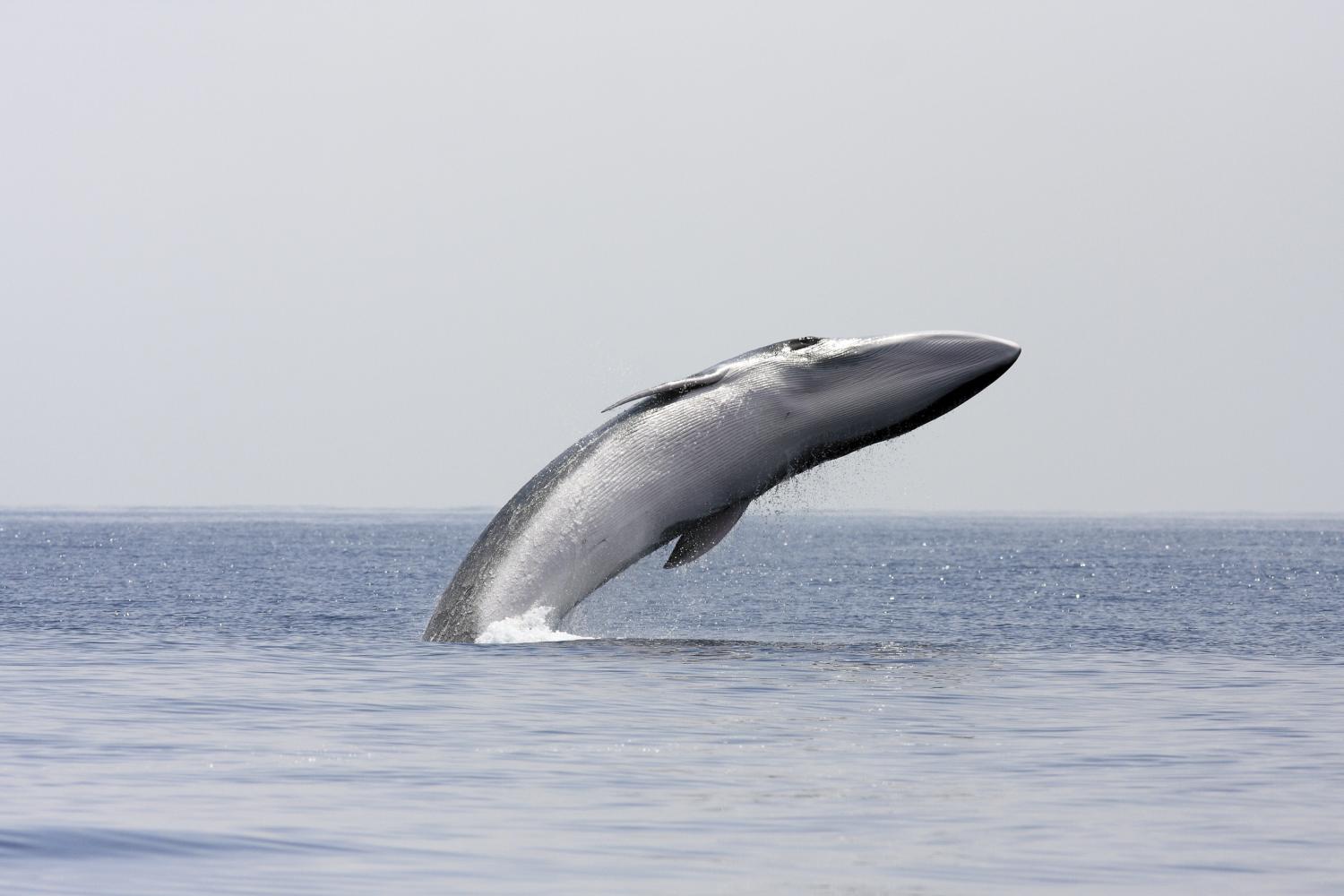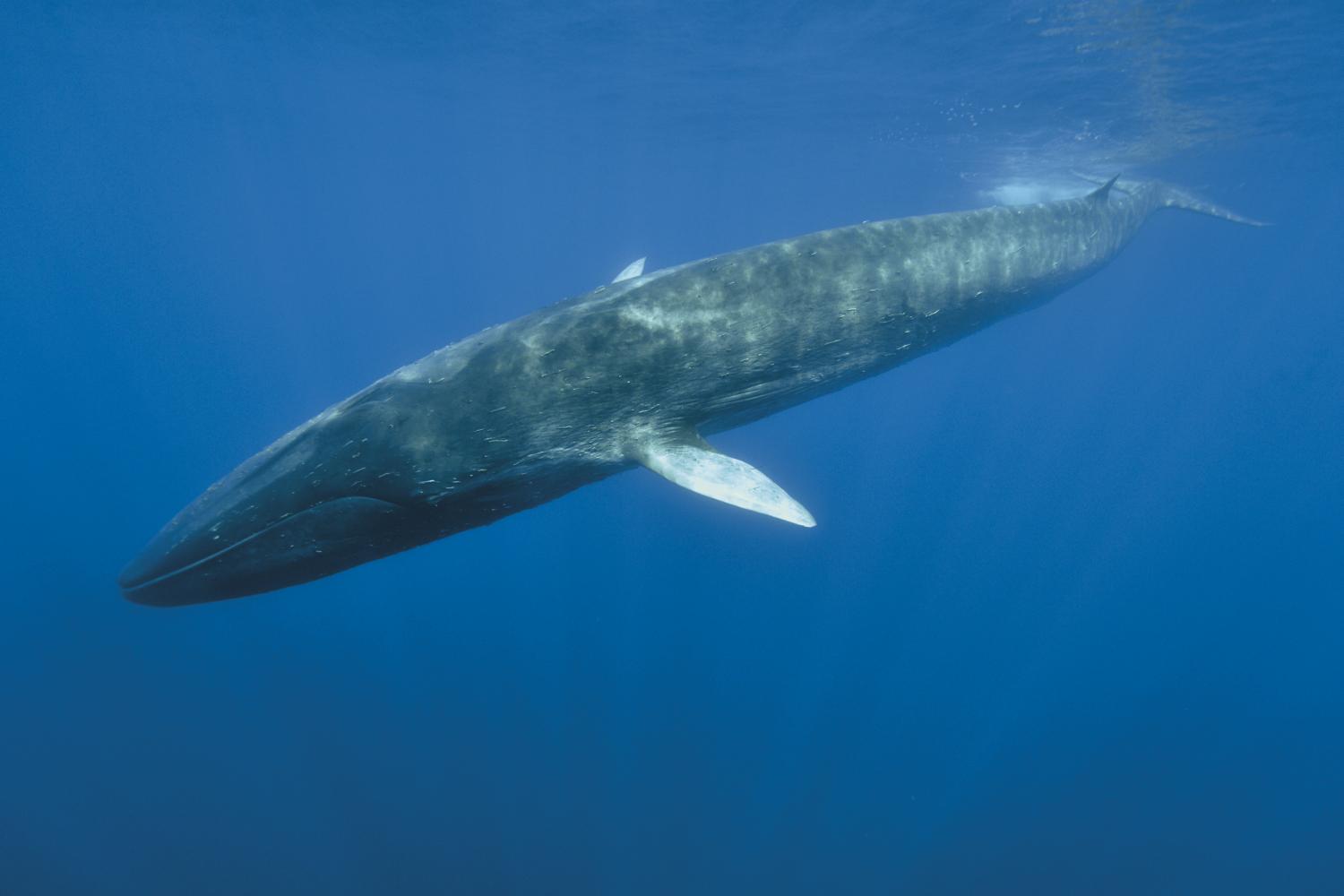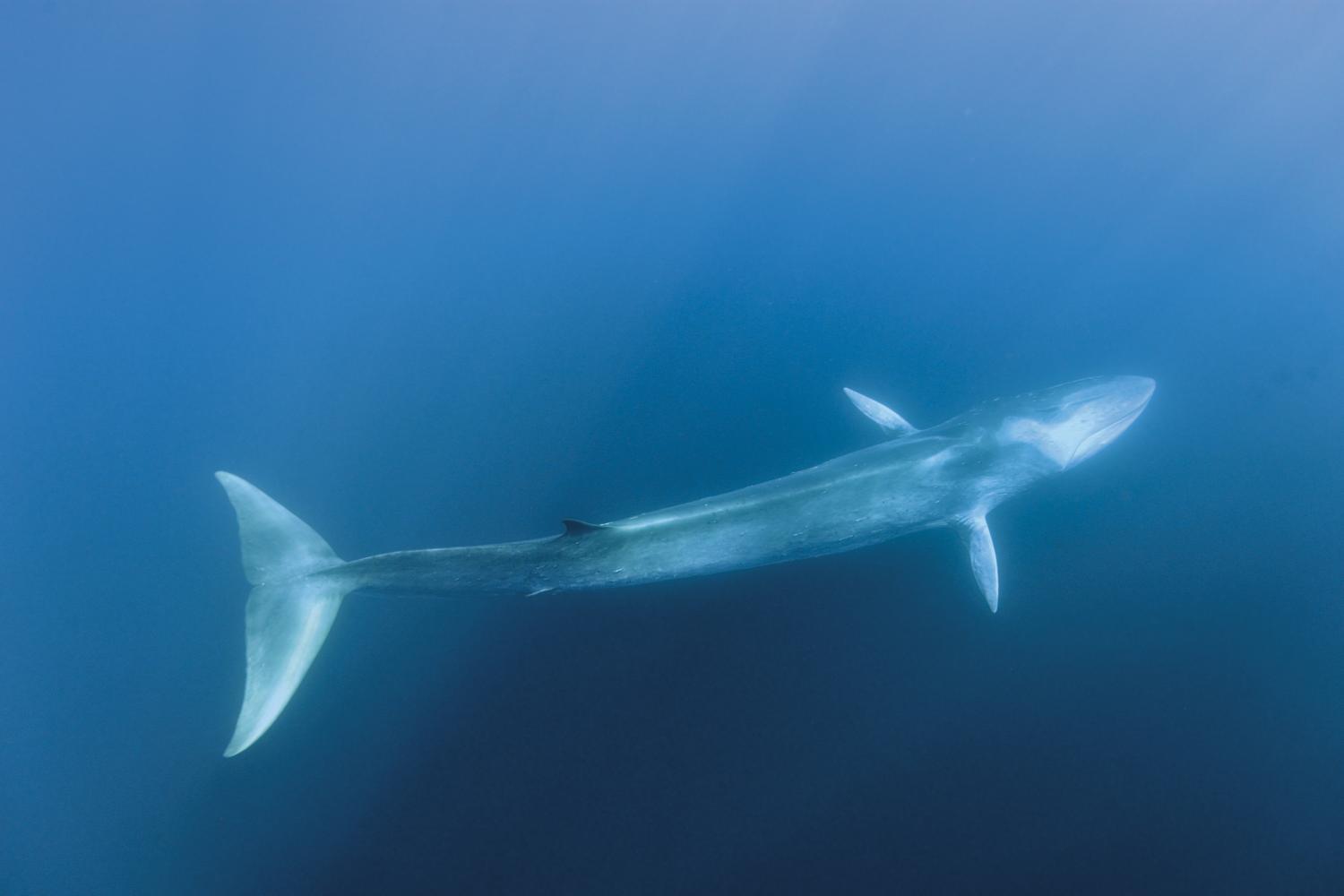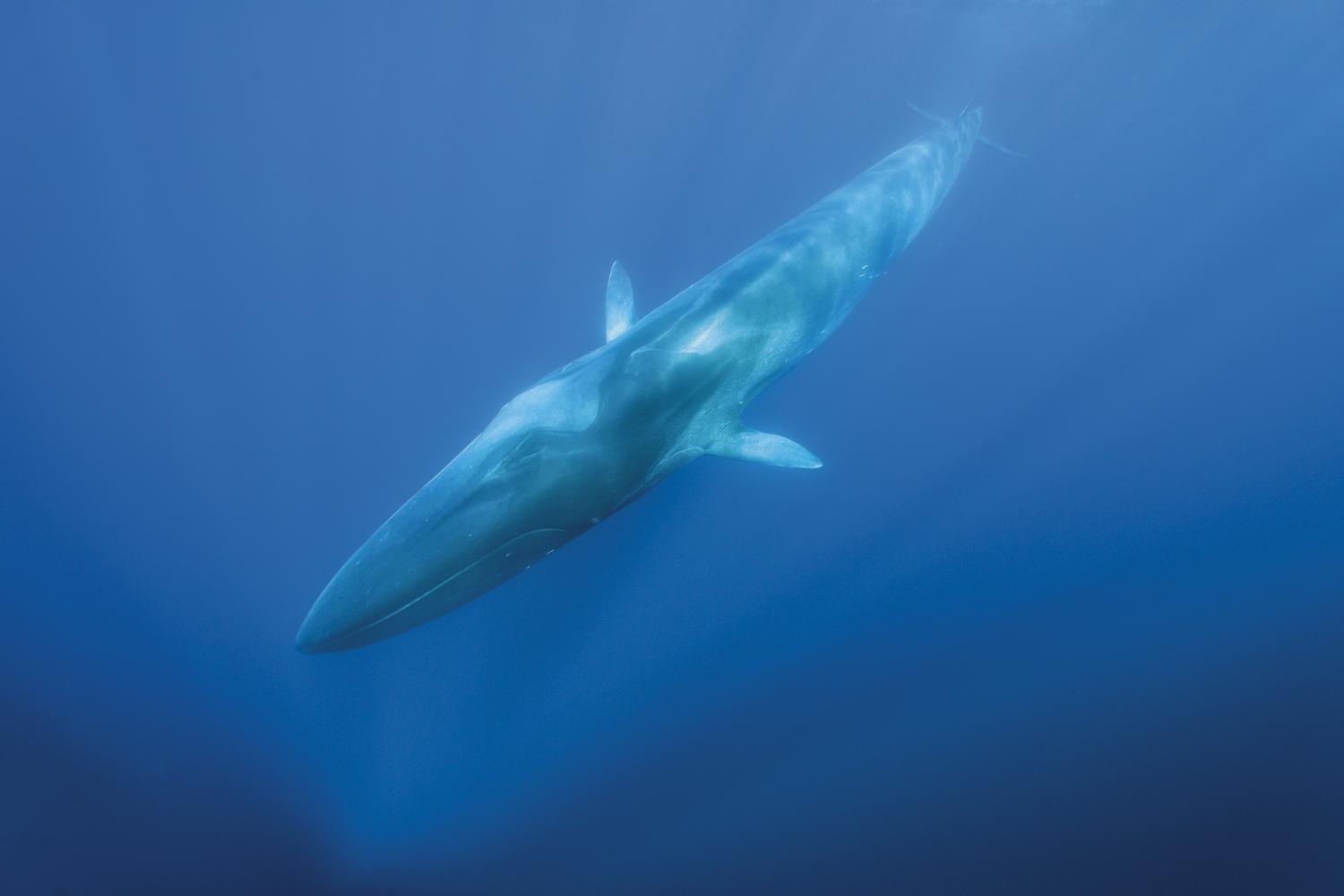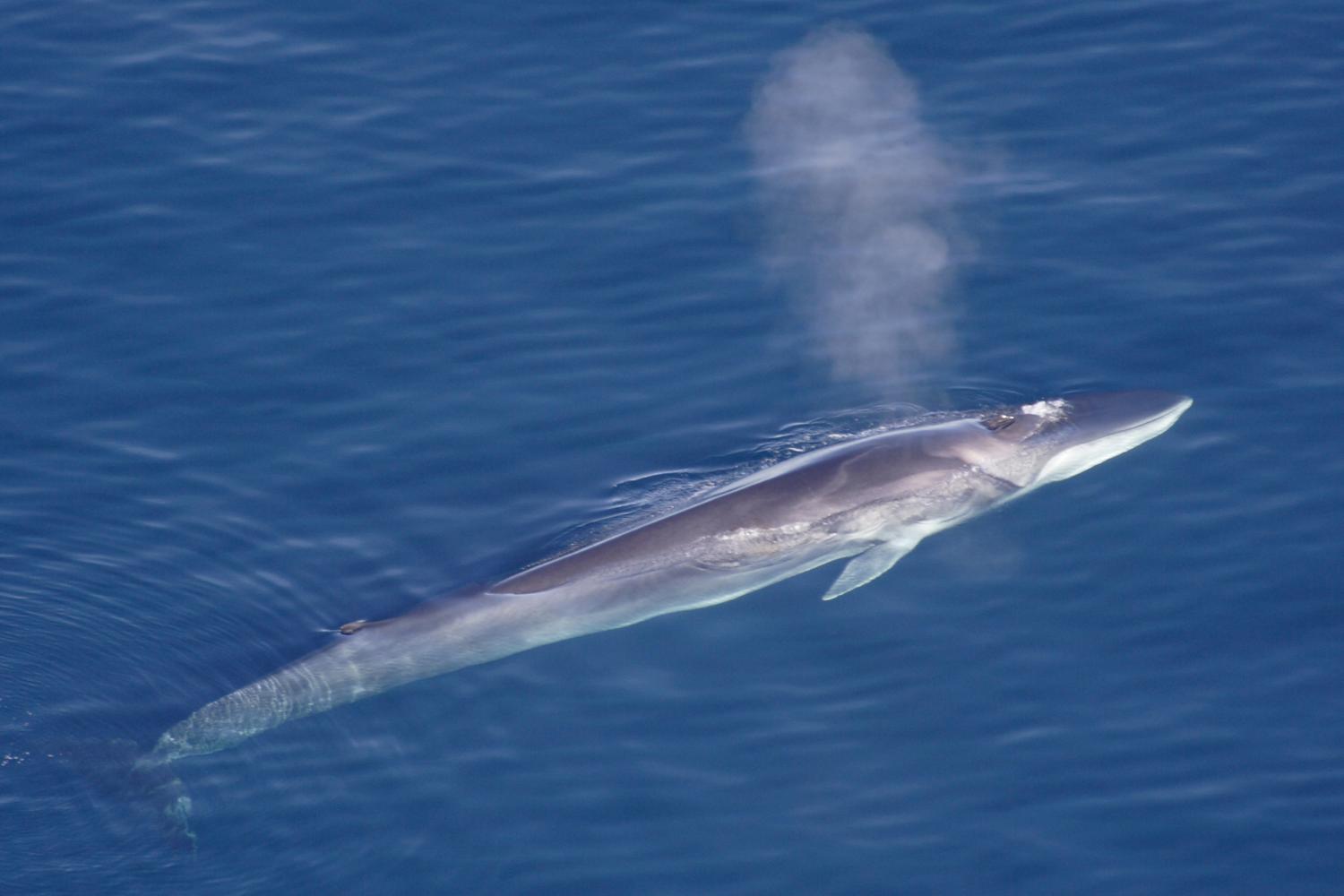Description
The fin whale is the second biggest animal on the planet after the blue whale and can grow up to 20 meters longs and weigh up to 40 tonnes. Its eye is the size of an grapefruit and its blow can rise as much as 4 meters! When feeding it can engulf as much as 25,000 litres of water in one go, that it then filters through its baleen(comb-like keratin plates). It swallows several tonnes of fish and crustaceans each day!
Scientific name
Balaenoptera physalus
Natural habitats
Pelagic zone
Did you know?
Collisions with ships are the first cause of mortality of the fin whale in the Mediterranean sea.
- Its head’s colouring is asymmetric: all of the right side is clear whilst the left side is darker.
Conservation stake
Low
Threats
- Pollution and changes to its environment
- Noise disturbance from maritime traffic
- Collision with boats
- Accidental capture in fishing nets
- Ingestion of plastic waste that can kill it./li>
Conservation management initiatives
Monitoring with photo-identification of individuals and their distribution ranges
How can I help to protect it?
- I do not cut across swim routes of cetaceans
- I keep a distance of more than 100 meters from them
- I do not follow them. If cetaceans suddenly change their speed or direction this mean that they do not want to be followed
- I pick up, take back and sort waste
- I ensure that the use of plastic packaging is limited

